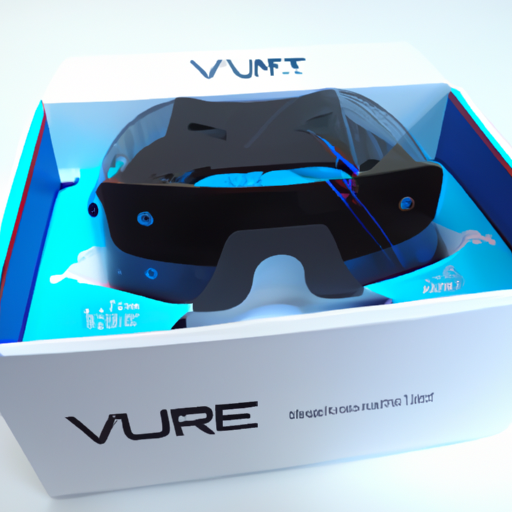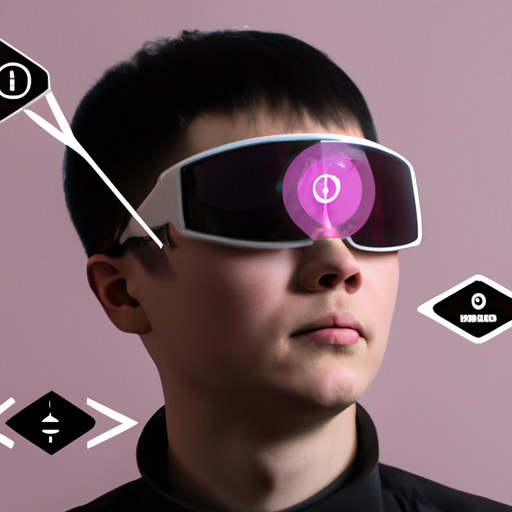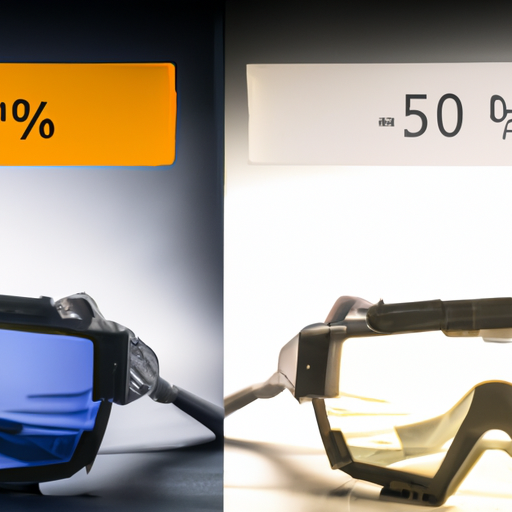Note: As an Amazon Associate we earn from qualifying purchases.
My thoughts on the VITURE One XR/AR Glasses: Worth it?
Introduction
I just tried the VITURE One XR/AR Glasses and they’ve got me seeing the future—quite literally. This isn’t the typical clunky AR gear; these glasses are sleek and subtle - I can see incorporating them in my daily workflow. I’ve been cycling through various AR and VR gadgets for years, but this one has managed to stand out with its sharp display and intuitive features.
Prices
Check prices of the VITURE One XR/AR Glasses on:
Initial Impressions and Design Aesthetics

From the moment I unpacked the VITURE One XR/AR Glasses, the design aesthetics left a strong impression on me. These glasses do not look out of place next to my other tech gadgets, which is refreshing in the realm of AR devices. They carry a certain sleekness that you’d expect from premium devices like those from Apple’s ecosystem. The matte finish and gentle curves around the temples contribute to a modern look that’s quite wearable in public, without attracting the wrong kind of attention.
In terms of initial setup, the magnetic USB connector is a thoughtful touch, echoing the user-friendly design philosophy of magnetic connectors popularized by Apple’s MagSafe. It snaps into place effortlessly, reducing wear and tear on the port and cable—a small but significant feature that enhances the user experience.
Display-wise, VITURE has managed to produce a picture that’s crisp and vibrant. The lack of noticeable pixels or ‘god rays’ is commendable, especially when you consider the technical challenges that usually come with near-eye displays. In various lighting conditions, from low-light rooms to brighter outdoor settings, the glasses manage to maintain image sharpness and clarity. The electrochromic darkening feature, which allows a quick switch between transparency levels, provides a customized viewing experience that’s a game-changer for immersive media consumption.
On the other hand, the inclusion of 3DoF sensors directly into the glasses frames is an interesting point. While it’s not full AR, the inbuilt support for head tracking diversifies potential use-cases, opening the door to possible productivity applications. It’s these kinds of forward-thinking features that suggest VITURE is on the pulse of what consumers might need in the near future.
Despite the positives, I did encounter some limitations with the glasses. The field of view (FOV) was narrower than anticipated. It’s adequate, but when you’re dealing with something positioned so close to your eyes, even a slight misalignment can cut off portions of the display, which can get frustrating. This is one area where future iterations could see improvement.
Moreover, while the idea of having screens that essentially float in front of you sounds revolutionary, it does take some getting used to, and isn’t without its issues. The fit is crucial—unless the glasses sit just right, the full potential of the display isn’t realized. The nose pads provided assist with this, but it’s not a one-size-fits-all solution.
The audio quality is good—better than expected for integrated speakers, in fact—but it won’t replace your high-fidelity headphones any time soon. The sound is there and it’s functional, yet it lacks the depth that you would get from a dedicated sound system, which might be important for those who value acoustics as part of the immersive experience.
Overall, these glasses from VITURE seem like a solid foray into the XR landscape. They’re not without their drawbacks, but what tech product is? If you can navigate the FOV limitations and you’re not looking for an audiophile experience, the design and image quality might just make you overlook these issues. After all, pioneering new realities doesn’t come without bumps along the way.
Functionality and User Experience

When I first slipped on the VITURE One XR glasses, the experience felt like stepping into a slice of the future. Having the ability to stream content on what virtually appears as a 120-inch screen is mind-blowing, particularly when experienced in HD. The crispness of the image belies the physical reality that you’re simply wearing a pair of glasses rather than sitting in a premium theater.
An obvious edge of these glasses is the extensive ecosystem they come with. Accessories like the Neckband, Mobile Dock, and HDMI adapter enhance the experience substantially, especially for entertainment and gaming purposes. The ease of setup was a pleasant surprise — it was practically plug and play with my devices. The compatibility with my new iPhone 15 Pro Max and M1 iPad Pro was seamless, which made the glasses an instant extension of my gadgets.
Depending on the context, my experience varied. For instance, while gaming with a connected Steam Deck, the visual output was spectacular. The 1080p display felt more refined than anticipated, almost giving an illusion of a higher resolution than advertised. Watching 4K content from YouTube via my phone was impressive, even if the glasses don’t support actual 4K resolution.
What stood out for me was the built-in electrochromic feature that allows for quick privacy adjustment by dimming the lenses. This feature is especially useful in varying lighting conditions, ensuring that the visual quality remains consistently good whether I am indoors or out in sunlight.
Nevertheless, there are some caveats to note. For one, the need for prescription lenses is significant for users like me with less than perfect vision. The glasses do have adjustable diopters, but they might not be sufficient for everyone, necessitating an additional purchase of corrective lenses. In my case, this was a necessary investment to clearly read text and enjoy a blur-free image.
Another technical nuance is the field of view (FOV), which I found somewhat limiting vertically. Sometimes, it takes a bit of fiddling to view the complete screen comfortably. However, many of these ergonomic issues can be mitigated through adjusting the nose pads and positioning the glasses correctly.
The audio component provided by the Harman speakers is decent, but they can lack immersive bass. For users who want richer sound, additional headphones may be a consideration. Yet for day-to-day usage, like casual gaming and movie watching, the convenience of built-in speakers is a bigger draw.
The VITURE Academy and customer support deserve a mention for their assistance in smoothing out any user experience wrinkles. Their quick and helpful responses to queries about both technical and support issues instill confidence in the product’s continued utility.
With all the positives, it’s important to recognize the technology is nascent and carries its challenges. Both the hardware and software are constantly evolving, so patience and a certain tech-savviness are required to keep up-to-date and troubleshoot when needed.
Overall, the VITURE One glasses represent a forward leap in personal entertainment, bringing portability and new dimensions to how we consume media. Despite the few drawbacks, the overwhelming advances they bring make them an exciting and largely satisfying product to own and use.
Comfort and Wearability for Extended Use

Comfort is a paramount consideration when it comes to wearable tech—especially devices like the VITURE One XR/AR glasses that are designed for extended use. The notion of strapping tech to your face for hours might seem like a recipe for discomfort, yet VITURE has managed to navigate this potential pitfall reasonably well.
I found that the glasses strike a good balance between a snug fit and wearability. They are lightweight, and the weight distribution doesn’t cause any significant strain over extended periods. It’s pretty clear that VITURE has paid attention to the ergonomics of the design. For someone who is used to the heft of traditional VR headsets, the lightweight nature of these glasses was a welcome change.
Adjustability is another strong point. The inclusion of adjustable diopters is a game-changer for people with myopia—like myself. This feature eliminates the nerd-strapping of wearing glasses beneath which, I’ve always found uncomfortable with VR headsets. Moreover, the inclusion of different nose pads adds to their customizable comfort. However, I must mention that finding the right fit with the nose pads took some trial and error before I could settle into a cozy viewing session.
The ability to reduce the brightness and toggle the electrochromic darkening feature is much-appreciated flexibility when it comes to ambient light control. With these, I could adjust for various lighting conditions without the need to interrupt my viewing experience. The electrochromic feature, in particular, helped reduce the distractions of the surrounding environment, allowing for a more immersive experience without the claustrophobia of full VR headsets.
Sound-wise, though not their strongest suit, the audio quality is decent enough for most uses. It won’t replace a dedicated set of earphones for the audiophile, but the spatial aspect and isolation are a neat touch. I was quite impressed by the lack of sound bleed, which means I could use them without disturbing others around me.
In terms of heat management, I initially had concerns about prolonged use generating uncomfortable levels of heat. Thankfully, these glasses manage to disperse heat effectively. I can vouch for the absence of any uncomfortable warmth even after a couple of hours of continuous use.
One limitation I noted is related to the field of view (FOV), which can be slightly restrictive compared to larger VR headsets. While VITURE did a notable job in terms of clarity and resolution, the narrow FOV may require some head-turning to catch the entire scope of the screen. This is a compromise to keep the form factor sleek and manageable, but for some users, this could detract from the sense of immersion.
Overall, my experience with the VITURE One glasses on the comfort front has been more positive than negative. They are one of the few wearable AR devices I can genuinely see myself using in a day-to-day setting without battling discomfort or fatigue. Their wearability sets a strong precedent for future AR devices aiming for mainstream adoption. While there’s still room for improvements—perhaps through enhanced FOV and further ergonomic refinements—for now, VITURE seems to have hit a sweet spot between comfort and functionality.
Value for Money and Final Thoughts

Considering the investment for VITURE One XR/AR Glasses, I find the value proposition tilting favorably towards the affirmative. I’ve been closely monitoring the AR space, and for what it’s worth, these glasses are quite competitive in terms of features and pricing against other players like the Nreal Light or the XReal Air.
Taking into account the clarity of the 1080p HD display and the lack of the dreaded screen door effect, which often plagues VR headsets, I was initially skeptical but pleasantly surprised following extensive use. The addition of built-in 3DoF sensors is a significant technical advantage, negating the need for external tracking hardware and allowing for more natural head movements while consuming content.
The electrochromic feature, which darkens the lenses at the press of a button, is another highlight. It’s a detail that enhances the viewing experience by adding a layer of immersion without resorting to obstructive physical shades - a plus on the design end that aligns well with a minimalist approach.
On the audio front, the speaker system is engineered to offer a private listening experience; although, the audio might feel slightly lacking in bass for avid music enthusiasts. However, the spatial aspect is crisp, articulating clear sound stages for media consumption and gaming sessions.
Yet, alongside these positives, some drawbacks are noticeable. The narrow vertical field of view can result in some visible screen cutoffs, especially for users who are at the extremes of the IPD (interpupillary distance) range. This requires some finessing with the nose pads and fit adjustments, which don’t always resolve the issue. Furthermore, users with far-sighted vision might need to budget for prescription lens inserts, an additional cost that could deter some potential buyers.
Supporting the notion of continuous improvement, VITURE’s active presence on platforms like Reddit and their commitment to community engagement through their Discord server insinuates the probability of future software and hardware optimizations. While the extent of these updates remains to be seen in practice, community engagement is always a promising sign for product longevity and user satisfaction.
Another factor worth noting is the proprietary magnetic connector. It’s reminiscent of Apple’s MagSafe technology in its convenience and durability, but it does come with the constraints of proprietary tech — finding replacements or spares may not be as straightforward as one might hope.
Factoring in the user-centric design choices, the glasses’ compatibility with USB-C devices and the evident care placed in additional accessories like the neckband and mobile dock, VITURE has crafted a compelling product for enthusiasts of AR and portable media.
In conclusion, the VITURE One XR/AR Glasses offer a solid mix of innovation and practicality — with incremental improvements on the horizon. They might not offer a flawless experience right out of the gate, but for early adopters and tech enthusiasts looking to dive into a personal IMAX-like encounter, these glasses hold their ground. It’s a product I’ve become quite fond of and frequently integrate into my daily routines. Despite acknowledging its imperfections, the overall experience has been positive enough to warrant recommendation.